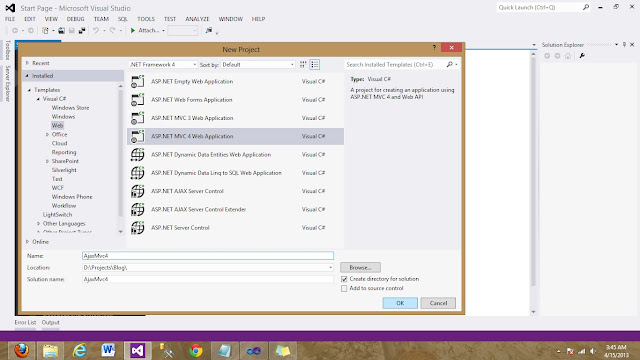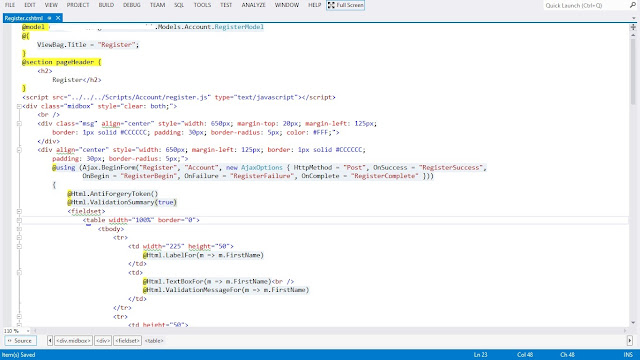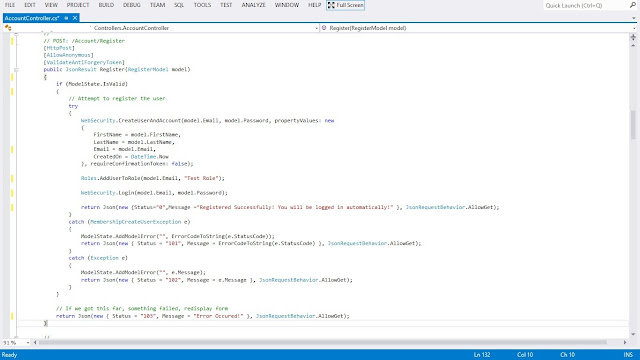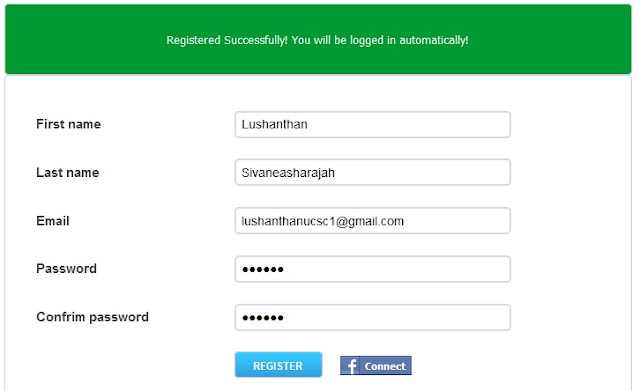For this purpose, I'm using Microsoft asp.net MVC4 application.
Step1. As always, add a new project (Not an empty web project).

Step2. Choose Internet Application from the project template.

Step3. As it is not an empty web project, there will be a set of code generated for you. For example the log in and the registration modules (Models, Controllers and Views). We are planning to alter them into Ajax forms.
Step4. Ok now, lets do some coding. We'll try to change the registration module. Go to register.cshtml in the Account folder inside the Views folder. Instead of the normal Html.BeginForm , change that to Ajax.BeginForm.
There are some slight changes you need to make when it comes to Ajax.BeginForm method. You need to provide the HttpMethod and some Java-script functions as AjaxOptions other than controller and the action name. I have provided Java script methods for OnBegin, OnSuccess, OnComplete and OnFailure events. (Check Step 6 for JS implementaions)

Step5. We also need to change the controller, since we are planning to return Json Objects so that we can process them in are Java scripts. I have made the return type as "JsonResult" instead of "ActionResult". ActionResult Class is parent class of JsonResult Class. However, I have opted for JsonResult so that I can be more specific (Register action will only return Jsons). Although, inside my "Register" action the registration process is the same, instead of doing a return View(), I do a return Json(). I need to process this Json at client side, according to the format I specify here. Here I'm simply returning a Status and a Message in my Json.

Step6. Now that we have written the code to send an ajax request and process it in the server side, we now need to handle the response in the client side. Below shown are my Java Script method implementations mentioned in step4. In my RegisterBegin() and RegisterComplete() methods I'm just showing and hiding a progress bar. RegisterFailure() method prompts for error with the HttpStatus Code. Note that this methods gets fired only for Http errors. Not our application errors. We need to handle our application errors within the RegisterSuccess() method as they also get return with http status success 200.
In our RegisterSuccess() method we differentiate the success registration and errors in registration based on the Status codes in our Json Object (Check Controller Code). If success, we are redirecting to the home page and if not we are showing the error message passed from the controller via the json object.
Step7. We are ready to launch now. Run the application and start registering. You will see a progress bar once you click on the submit button, and the success message on a successful registration. Try some exception scenarios as well! Good Luck!



No comments:
Post a Comment